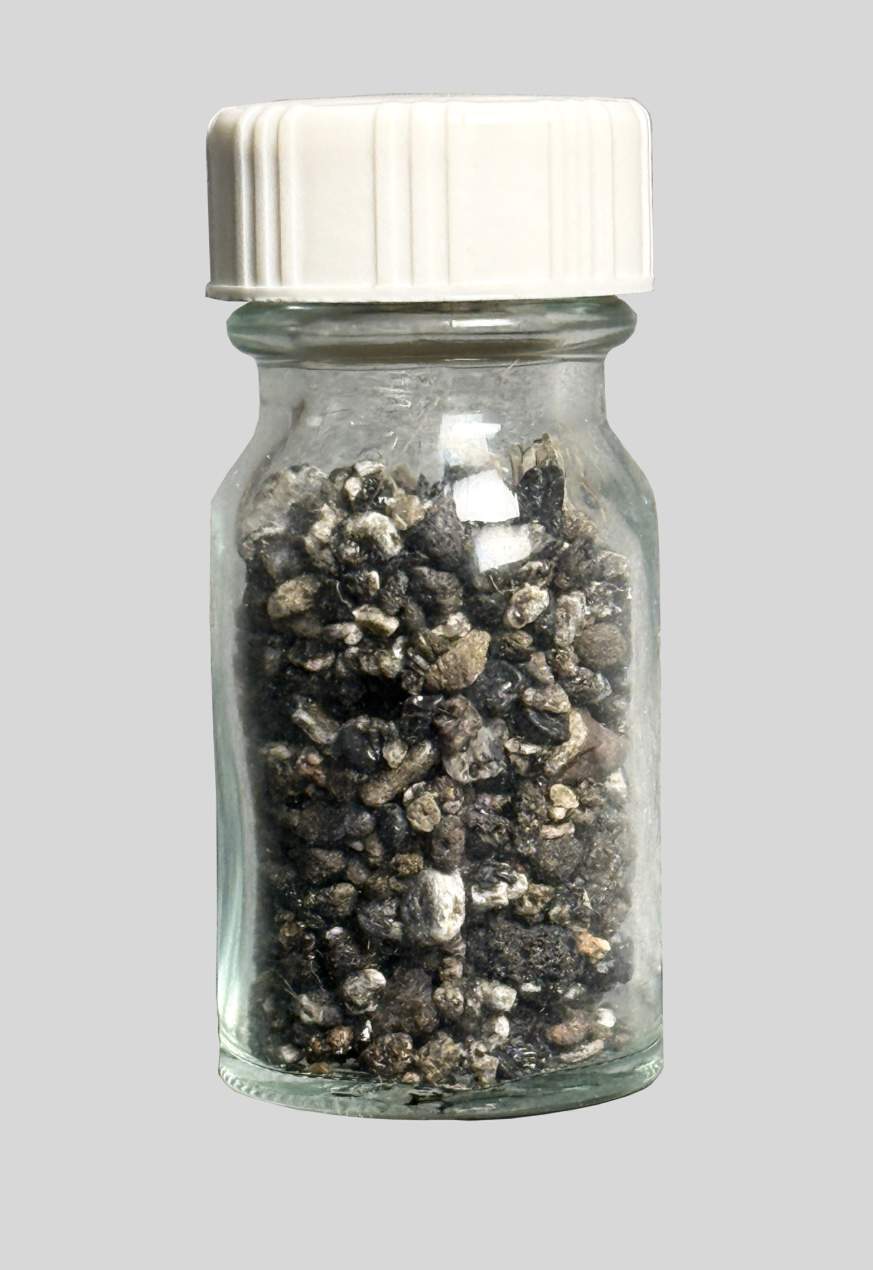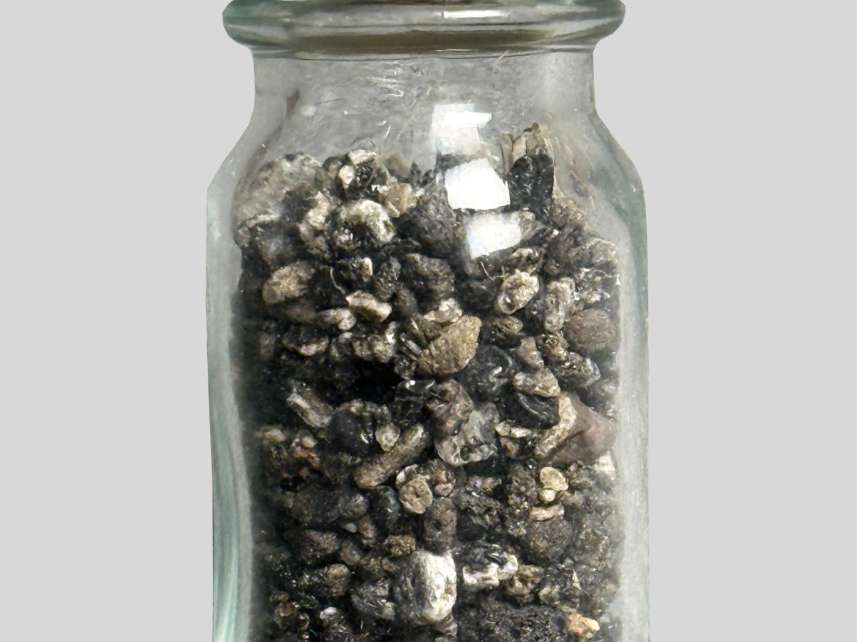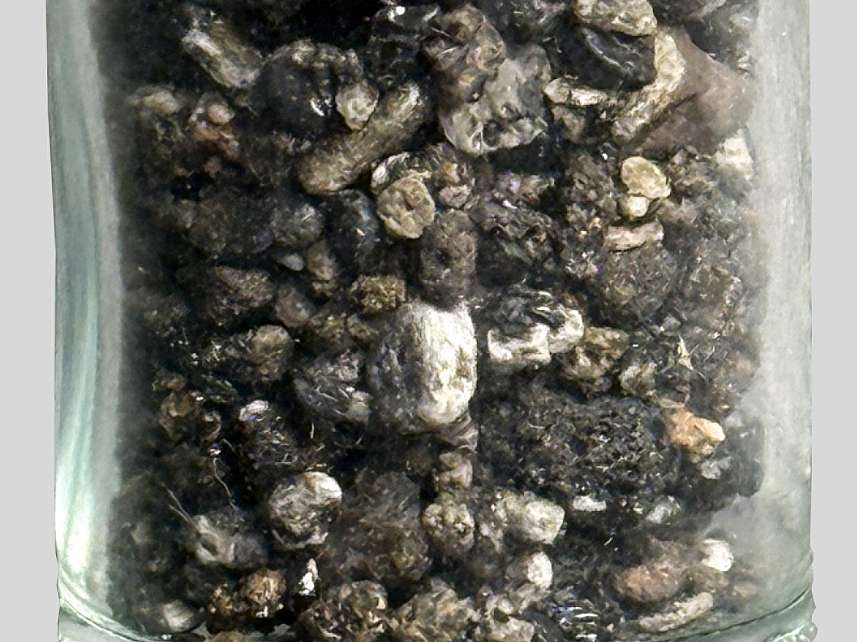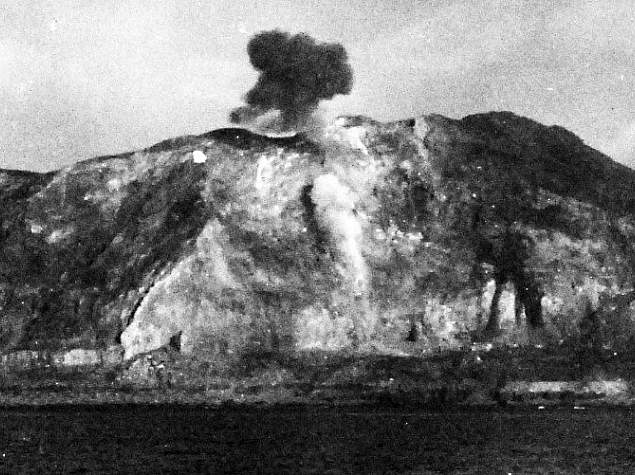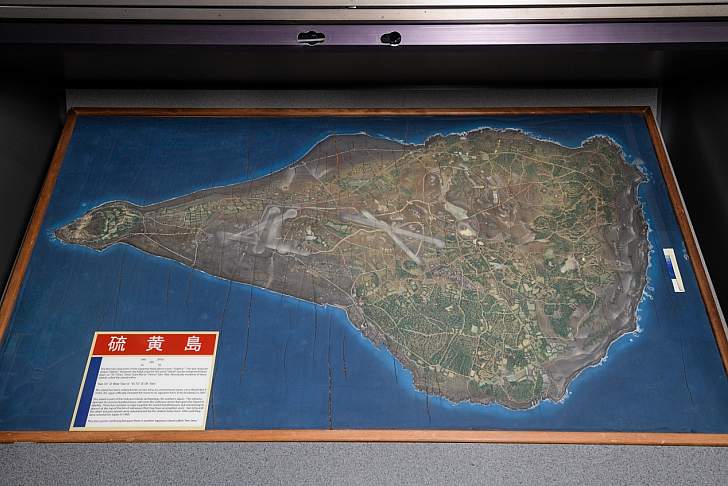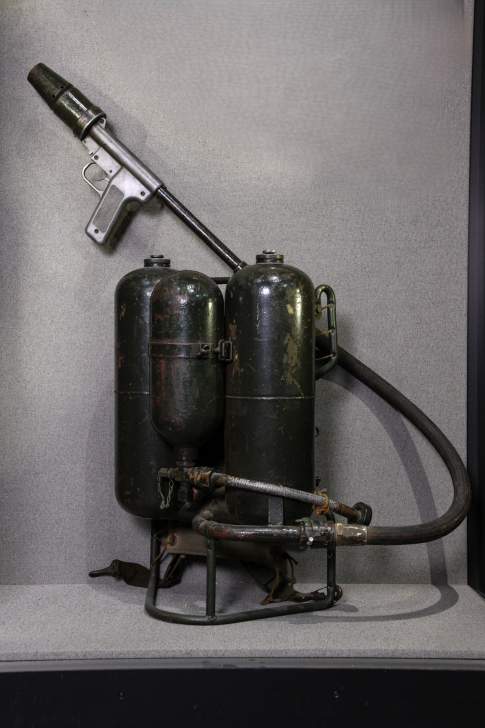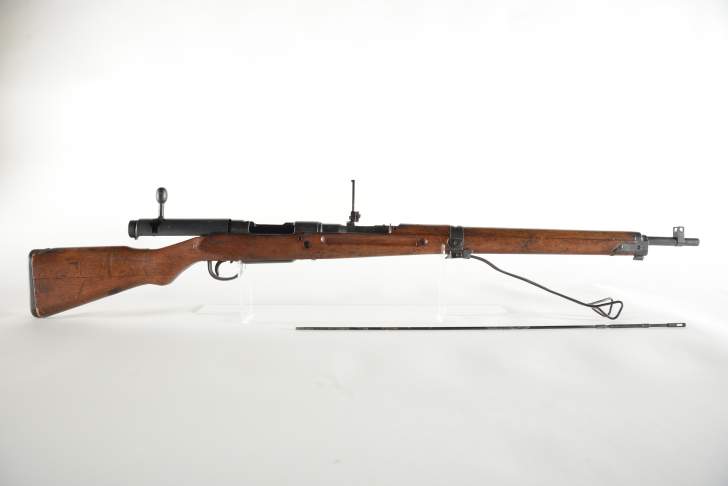A vial of volcanic sand from Iwo Jima. The sand on Iwo Jima was unlike anything the invading Marines had trained with, filled with black volcanic ash. This sand was grainy and loose, causing the men to sink even up to their knees as they struggled to move along the beaches. Marines inched along in the volcanic ash, staying low to avoid enemy fire. The sand jammed their guns, so the men could only take one shot at a time against the barrage of bullets rained down upon them by the Japanese. The Marines were unable to dig foxholes, since their holes would be refilled immediately by the loose sand. The sand also wreaked havoc on the heavy equipment the Americans brought with them. Wheeled and tracked vehicles both floundered as they attempted to land. They could not gain traction in the loose sand and quickly became partially buried. This caused a pile-up of machinery that prevented other landing craft from reaching the beaches. Entire Construction Battalions and Transportation Battalions were dedicated to removing beached vehicles from the area to allow new boats of men and equipment to land.
This sand was collected by donor Larry G. Brown during a visit to Iwo Jima on 26 January 2001.

